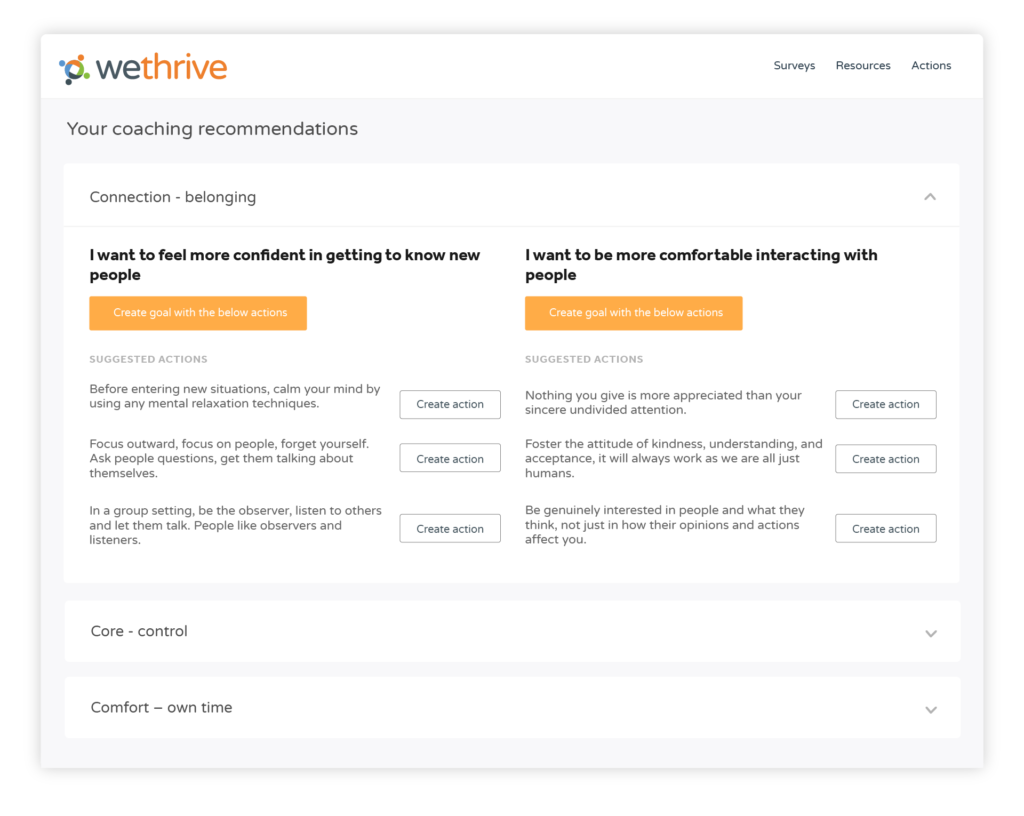In a recent WeThrive webinar we asked our audience of CEOs, HRDs and people leaders to vote for their top priority in 2022. Interesting, although perhaps unsurprisingly, 50% voted for mental health and wellbeing, prompting a discussion about how to improve wellbeing at work.
With over 8 million people in England facing a “second pandemic” of mental health issues and national levels of depression doubling since the start of Covid, wellbeing can no longer be seen as a “nice to have” at work. Improving mental health in the workplace is critical to business success, with many leaders acknowledging that healthy and happy staff are more productive, more engaged, and much more likely to stay.
Improving mental health in the workplace

However, each one of these areas impacts the other and cannot be separated from the employee experience for each individual. To truly improve mental health and wellbeing at work, we need to take a holistic approach and align each of these initiatives for each individual.
The current state of wellbeing at work
Many organisations have an annual wellbeing week or an employee assistance programme for people struggling with their mental health. These initiatives can offer comfort and guidance to those in need, but they rarely uncover and, most importantly, resolve the root causes of poor wellbeing.
That’s because each of our needs vary over time and depending on what’s happening around us, our wellbeing needs to be supported every day of the year. If your employees are struggling because they feel anxious about travelling to work on public transport during a pandemic, a healthy eating day or yoga session won’t resolve their issue.
But in a large workplace or hybrid working environment, how can you uncover and resolve the causes of poor wellbeing?
3 ways to improve mental health at work
More meaningful one-on-ones

Dedicate time in your meetings for employees to discuss how they’re feeling and come up with actionable steps that you can take to support their needs. This will create much more productive and personalised conversations around how to improve mental health and wellbeing at work, and with the right direction, your people can access the support they actually need.
For more information about running a successful one-on-one meeting, read our One-on-One Meeting Template blog.
Stress relief exercises
Stress is one of the main drivers of poor wellbeing at work. While some stress can actually be beneficial as a stimulant to employees, too much of it can disrupt the balance. Many mental health issues at work require deeper understanding and specific actions to resolve, but it is important to recognise that some causes of stress can be addressed with simple self care.
Being active should be encouraged by all organisations as a low cost, effective way to tackle poor wellbeing. Taking a walk, trying some breathing exercises and dialling down with mindfulness are all ways your people can take action to improve wellbeing at work.
However, for this to be truly effective your organisation must make it clear that this is promoted from the top as part of a wider cultural investment in wellbeing and lead by example. Managers should tell their team if they’re going for a short walk to clear their head and senior leaders should attend mindfulness sessions to demonstrate their commitment to improving wellbeing at work.
For more examples of stress relief exercises read our Stress Relief Exercises at Work blog.
Provide personal action plans for each person
Mental health and wellbeing is very personal. Some employees feel uncomfortable sharing how they feel in one-on-one meetings with their manager, or even struggle to pinpoint exactly what’s causing their poor wellbeing. Others have problems that stress relief exercises simply cannot address.
So what’s the alternative? A mental health and wellbeing survey can allow you, and your employees, to dig deeper and uncover the underlying causes of poor wellbeing.
But identifying the issue is just the first step. It is critical to deliver a timely, personalised and straightforward set of actionable recommendations to the people who need it most – your employees.
WeThrive’s mental health and wellbeing survey does just that, giving your people the opportunity to survey themselves whenever they feel anxious, stressed or unhappy to improve wellbeing at work. With over 1000+ recommendations and 350+ learning resources, our intelligent software uncovers exactly what is causing poor wellbeing and offers meaningful, actionable recommendations they can take to improve their mental health.

Anonymous team results can be viewed by managers, administrators and HR to identify where extra help may be needed. For example, if every team displays low scores in “sleeping”, a Sleep Week with advice and support for achieving a healthier balance is a wellbeing solution that could actually benefit a majority of your employees.
Want to see the mental health survey in action? Book a demo today.



